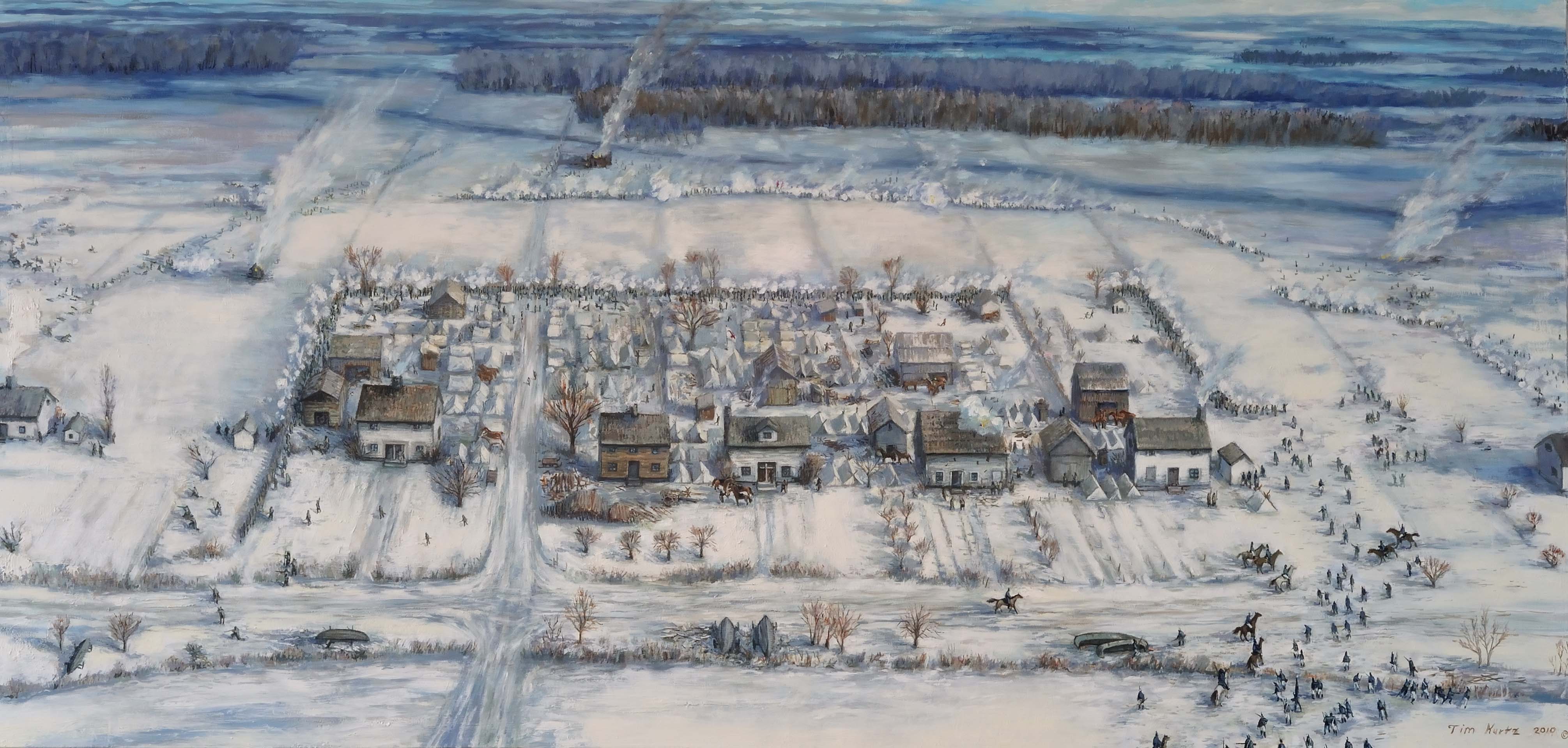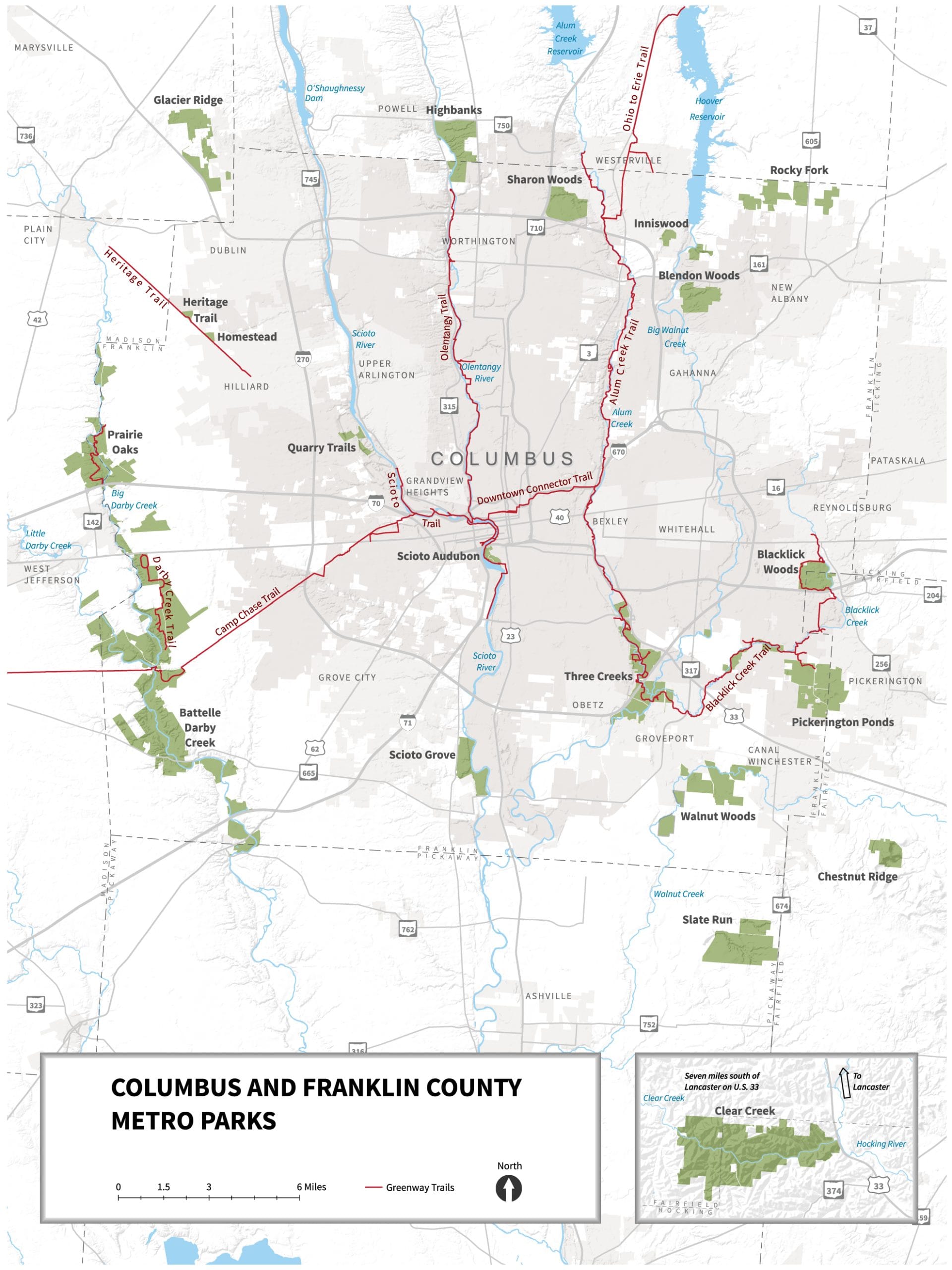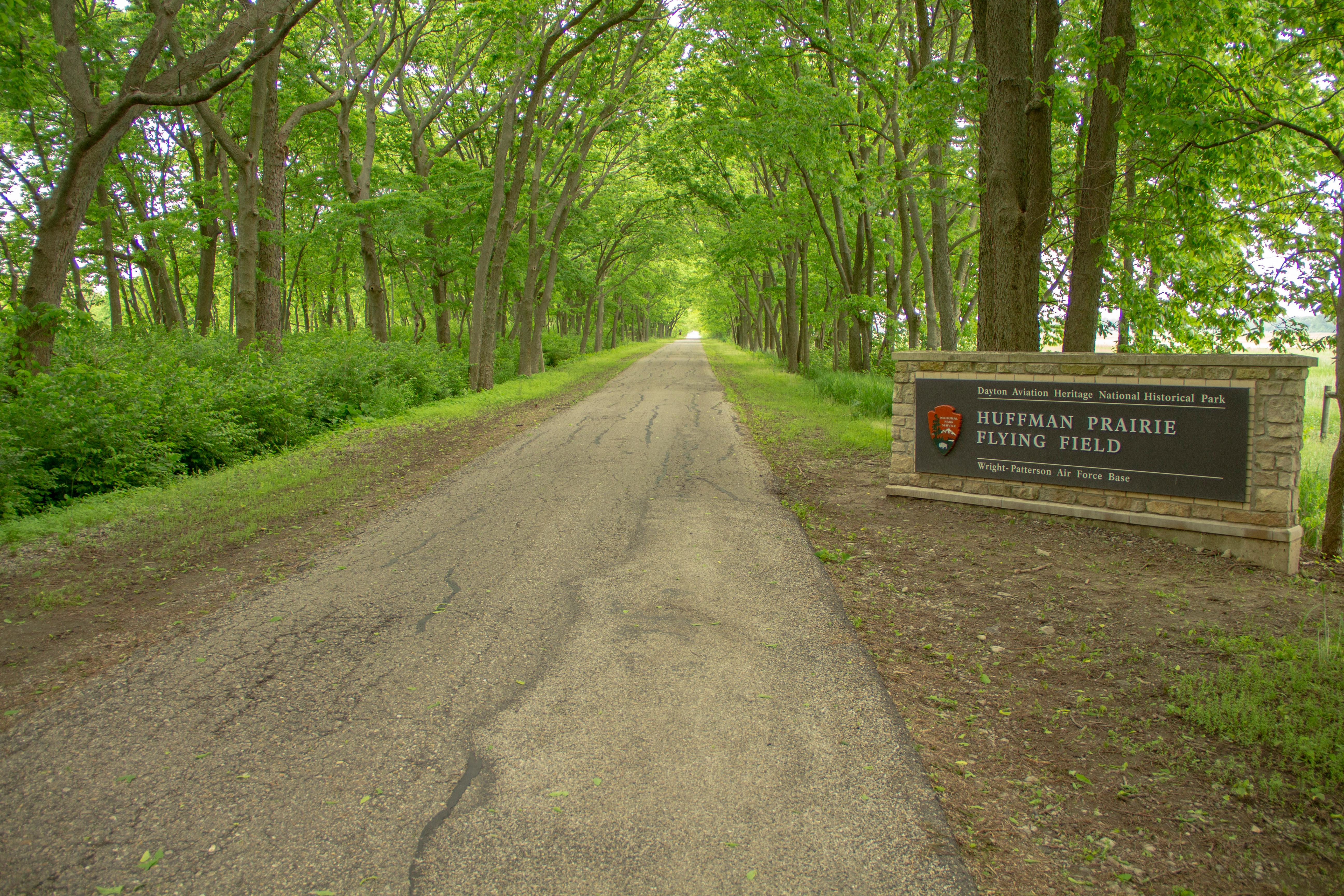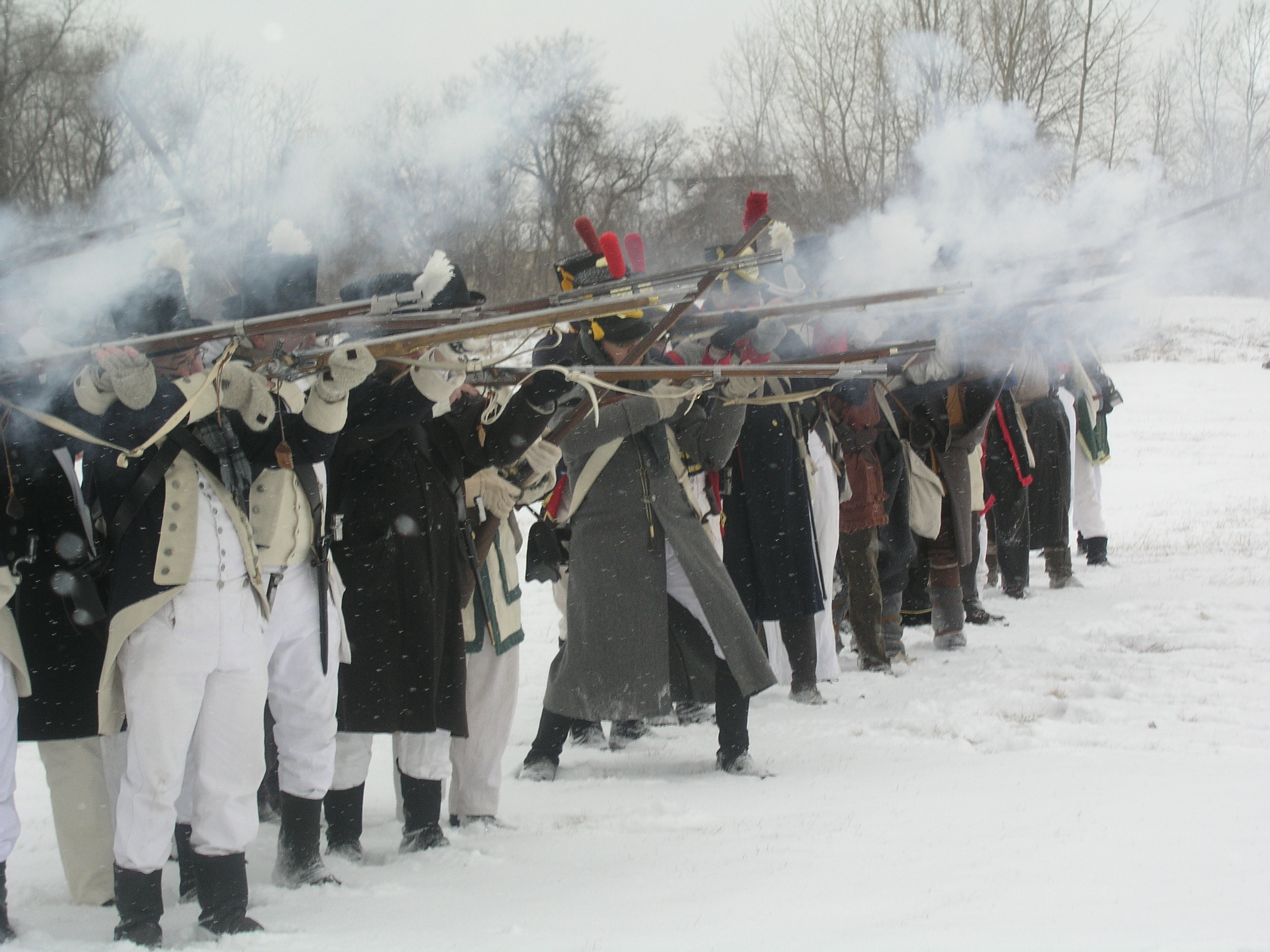
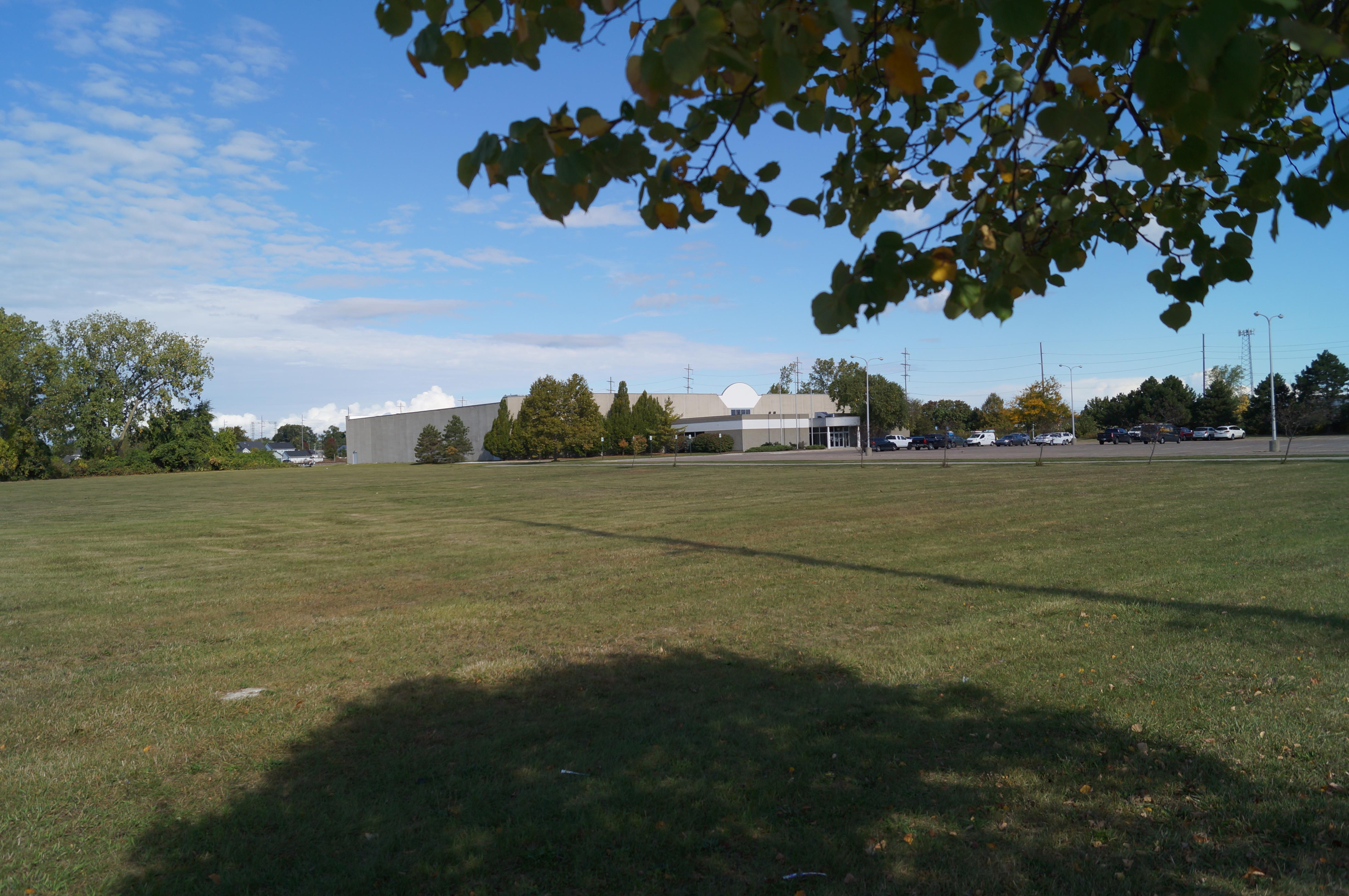
River Raisin National Battlefield
Battle of Frenchtown
River Raisin National Battlefield Park, located in Monroe, Michigan, preserves the site of the Battle of Frenchtown. This was a significant conflict during the War of 1812. The battle occurred from January 18 to 23, 1813. It is noted for being one of the bloodiest engagements of the war. It remains the deadliest conflict recorded on Michigan soil and one of the most tragic episodes of the war.
The area was designated as a Michigan Historic Site on February 18, 1956, and was added to the National Register of Historic Places on December 10, 1982. It officially became a unit of the National Park System on October 22, 2010, following the passage of the Omnibus Public Land Management Act on March 30, 2009. It is the only national park the commemorating the War of 1812.
The Battle of Frenchtown, also known as the Battle of the River Raisin, was a significant engagement during the War of 1812, fought from January 18 to January 23, 1813, near present-day Monroe, Michigan. Here is some information about the battle:
Background:
After the American surrender of Fort Detroit in August 1812, the British and their Native American allies gained control over much of the Michigan Territory. In early 1813, the United States aimed to reclaim Detroit and its surrounding areas. Brigadier General James Winchester led a column of approximately 1,000 troops, primarily inexperienced Kentucky volunteers, toward Frenchtown, a settlement along the River Raisin. On January 18, Lieutenant Colonel William Lewis led a detachment across the frozen river, attacking and forcing a retreat of the British and Native American forces, marking the First Battle of the River Raisin.
Second Battle and Massacre:
On January 22, British Colonel Henry Procter, with a force of 1,397 soldiers and Native American allies, launched a surprise counterattack on the American position. The Americans, unprepared and scattered, were overwhelmed. Approximately 397 Americans were killed, and 547 were captured. The following day, January 23, the Native American allies of the British killed dozens of wounded American prisoners who were unable to march, in what became known as the River Raisin Massacre.
Aftermath and Legacy:
The massacre deeply shocked the American public, particularly in Kentucky, which had supplied many of the troops. The rallying cry "Remember the Raisin!" spurred further enlistments and a renewed commitment to the war effort.
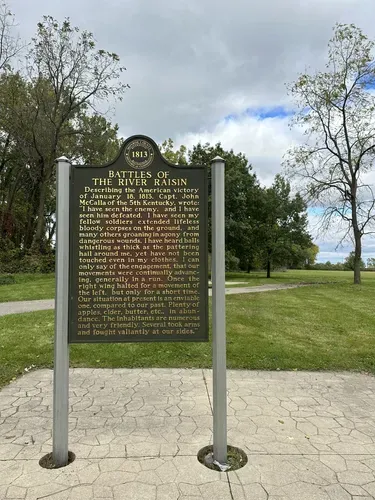
Address & Directions
Address & Directions:
- Visitor Center Address: 333 North Dixie Highway, Monroe, MI 48162
- Directions: From I-75, take Exit 15 toward North Dixie Highway. The visitor center is approximately 1.4 miles north on the right.
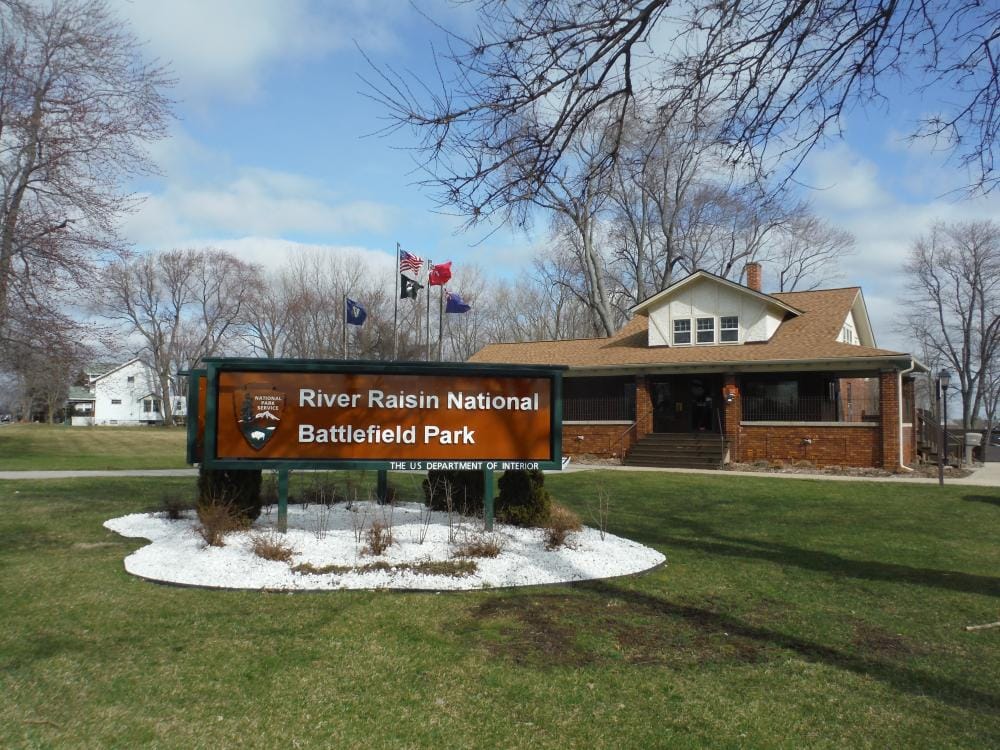
Hours & Seasons:
- Visitor Center: Open daily from 9:00 AM to 5:00 PM, closed on Thanksgiving Day, Christmas Day, and New Year's Day.
- Park Grounds: Open year-round from sunrise to sunset.
Fees:
- Admission: Free; no entrance pass required.
For more information, visit the official National Park Service website or call the Visitor Center at (734) 243-7136.

Hiking Trails
- Battlefield Loop Trail: A 0.6-mile paved loop with historical markers, accessible for walking and biking. Paved and accessible, suitable for all ages and abilities.
- Mason Run Loop Trail: A 1-mile wood-chip loop trail through the battlefield grounds. Wood-chip surface generally considered easy, with minimal elevation gain.
- River Raisin Heritage Trail: Part of a 4.4-mile paved loop connecting to Sterling State Park. Paved, fully accessible, and ideal for walking and biking.
For more information, visit the official National Park Service website or call the Visitor Center at (734) 243-7136.

Other Things to do
Spend Time Outdoors!
The park offers a variety of things to do:
- Visitor and Education Center: Features exhibits on the Old Northwest Territory, Great Lakes history, Native American culture, French settlement, and the Battles of the River Raisin. The center includes a diorama of the River Raisin settlement, orientation maps, a gift shop, and a theater showing the film "The Untold Legacy of the River Raisin".
- Interpretive Programs: Ranger-led programs are available to educate visitors about the site's history and significance.
- Guided Tours: Check with the visitor center staff for times and fees.
- Historic Markers and Monuments: The park features various markers and monuments commemorating the events and individuals associated with the Battle of Frenchtown.


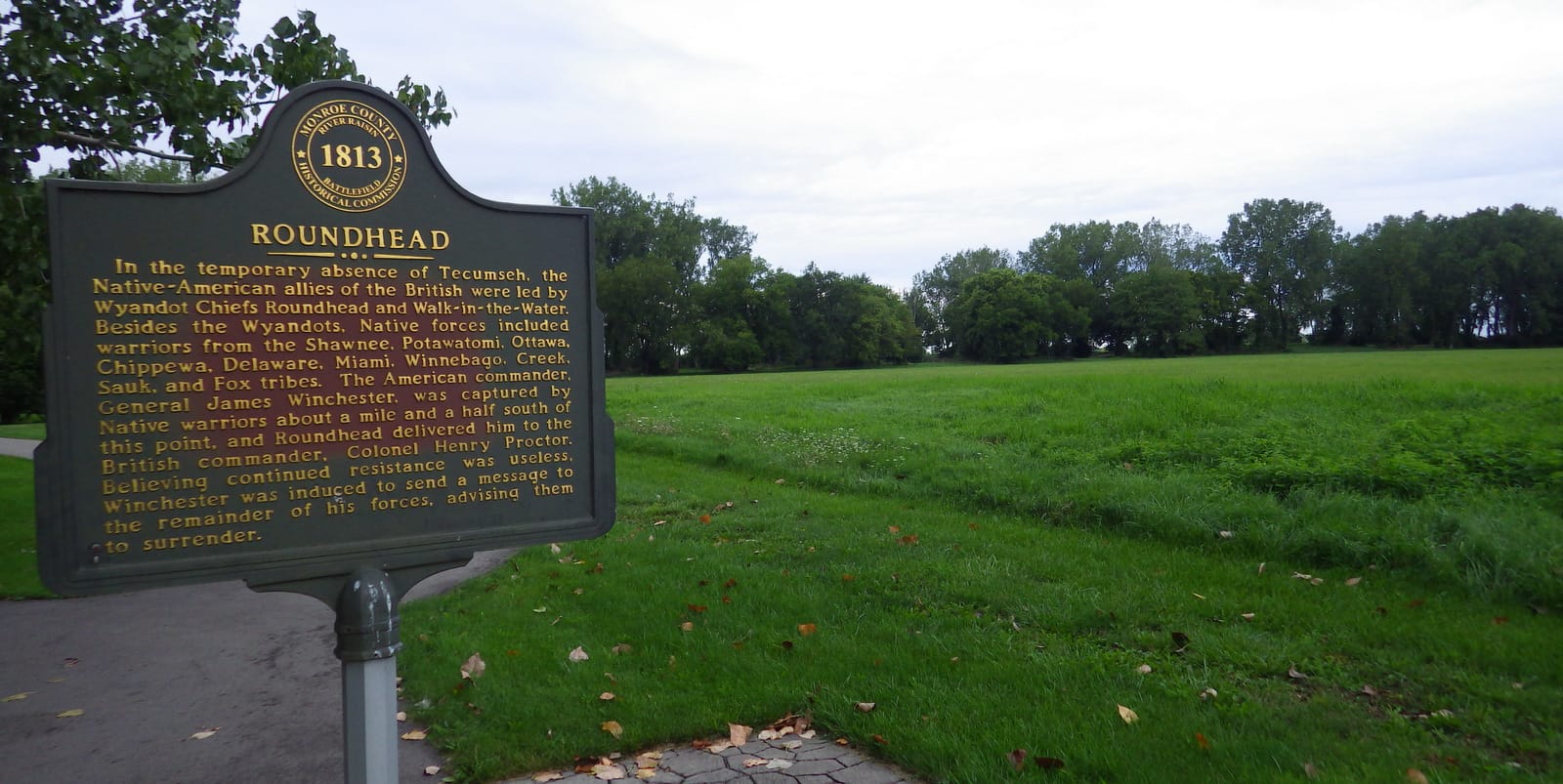
.jpg)

- Pet-Friendly Areas: Pets are allowed in the park and on the hiking trails but must be kept on a leash at all times.
- Picnic: Bring some refreshments and relax.
- Live Historical Re-enactments: Check with visitor center staff for times of events.
Conclusion:
River Raisin National Battlefield Park is definitely worth a visit. I really didn't know about the Battle of Frenchtown during the War of 1812. It was very enlightening to learn about the War of 1812. The scenery is great too. Hikes at the battlefield aren't long but there are other trails in the area if you like.
If you have something you would like to submit to have posted on this website, such as a blog submission or a new hiking trail you think we should check out, please contact us below!


